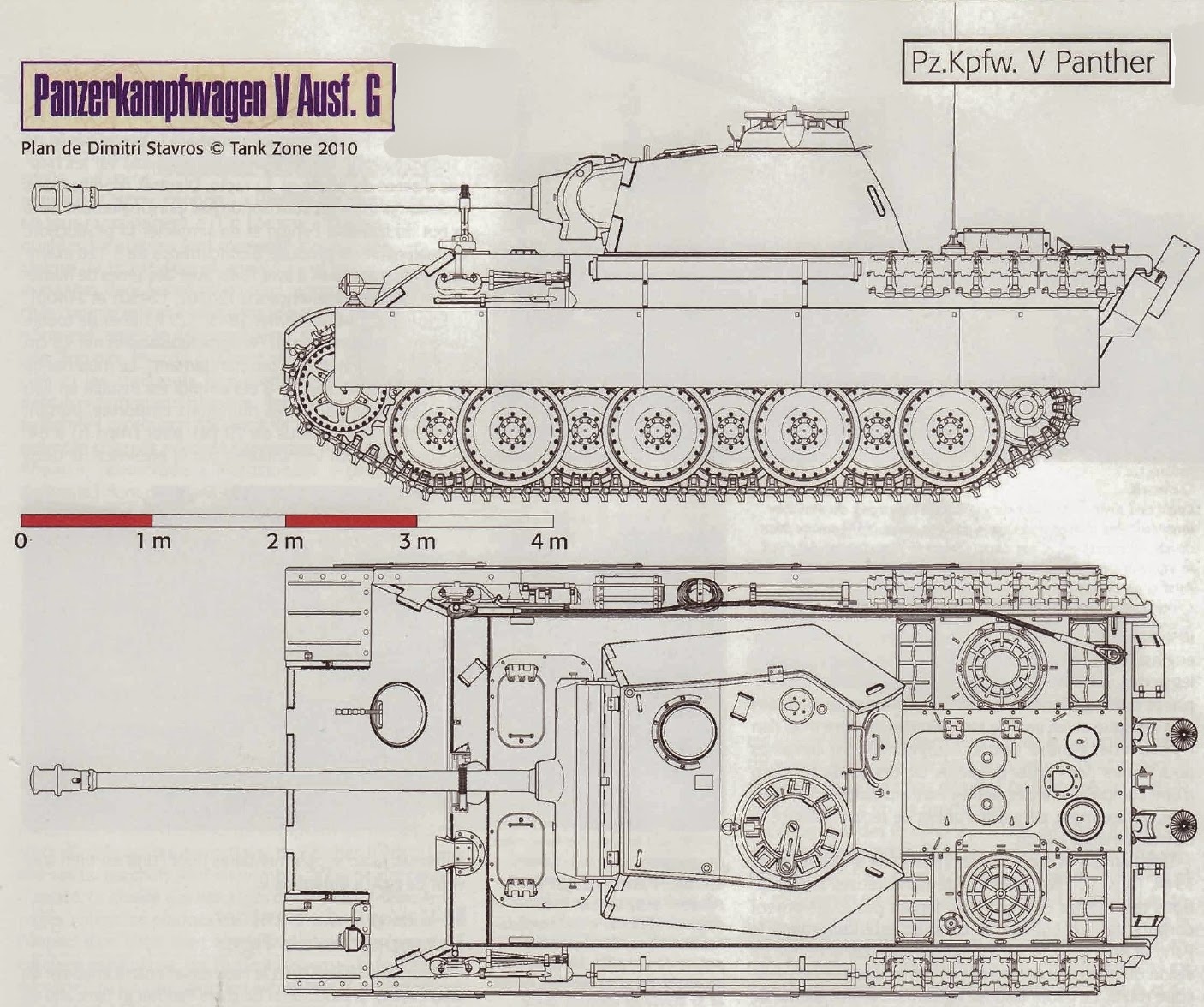The second production model of the Panther
appeared in 1943 and was built until 1944. It was designated Pz Kw V Panther
Ausf A (Sd Kfz 171) and these vehicles could be identified externally, by the
ball-mount for the bow MG manned by the wireless operator. The Panther was by
now also given the 5 mm thick apron armour and the usual "Zimmerit"
protective coating, while some were fitted with an AA machine gun mount, which
was fixed to the commander's cupola. This cupola had been improved in shape,
even on the earlier version, and indeed the whole turret had been simplified
for production purposes. During 1943 a total of 1768 Panther A models were
produced. A directive from Hitler dated 27th February 1944 ordered that the vehicle
was to be known simply as the Panther, and the designation Pz Kw V was
discarded.
The "G" version of the Panther
(Sd Kfz 171), which appeared during 1944, was given a different hull shape.
Whereas in the D and A models the hull side plates had been horizontal, on the
Panther G they were sloped. This resulted in a considerable reduction in
production costs. The driver's visor flap in the glacis was also discarded in
this model and rotating periscopes were substituted. Some vehicles of the G
type also had the new steel bogies produced by Deutsche Eisenwerke and the same
wheel arrangement as the Tiger II (King Tiger). In addition new idlers were
fitted. The ammunition supply was 82 rounds. The vehicle cost (without weapons
and communications equipment) was RM 117,100. Panther Ausf G stayed in
production until the end of the war, and in 1944 3740 were manufactured. The
gun cleaning gear, which had previously been carried in a cylindrical container
on the side, was fitted, in the late production vehicles, at the rear across
the engine compartment. Chassis numbers of the G series started at 120,301.
An unusual variant of the Panther used in
action during the Ardennes Offensive of 1944 was the standard vehicle
disguised, by using metal sheets, as the American M 36 tank destroyer, and such
altered vehicles were issued, together with some captured US tanks, to German
special units. With German crews and American markings they were intended to
create chaos among Allied units at the start of the offensive, and they were
sometimes very successful.
As with earlier German tanks, it was
suggested that the Panther should be upgunned. In November 1944 Krupp proposed
the installation of the 8·8 cm KwK 43 L/71 gun, without its muzzle brake, in
the original Panther turret. This idea never left the drawing board however.
The highest production figures were reached
in August 1944 with a total of 1SS Panthers. This figure later dropped because
of shortages of raw materials and due to enemy action. Only 25 vehicles per
month were produced in the closing stages of the war. In 1945 Maschinenfabrik
Niedersachsen-Hannover built 161 vehicles.
After overcoming initial difficulties the
Panther remained to the last an excellent design which was never quite
perfected.






No comments:
Post a Comment